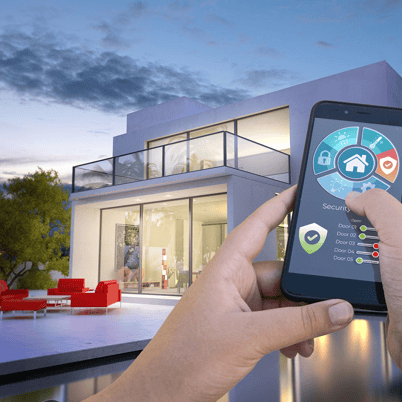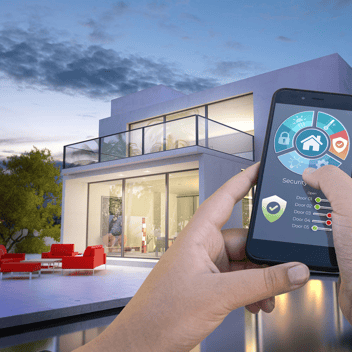Using Wi-Fi HaLow To Build Out From The Smart Home To The Smart Yard
 Some of us are wondering what to do with our newly found gardening skills during the pandemic and how technology can help us. With people going out and about let’s take a moment to appreciate how Wi-Fi HaLow is the perfect wireless technology for the smart IoT-enabled yard. With standard smart home technologies coming a bit short to cover outside. And current long-range wireless technologies not being fast enough to support all the potential consumer applications.
Some of us are wondering what to do with our newly found gardening skills during the pandemic and how technology can help us. With people going out and about let’s take a moment to appreciate how Wi-Fi HaLow is the perfect wireless technology for the smart IoT-enabled yard. With standard smart home technologies coming a bit short to cover outside. And current long-range wireless technologies not being fast enough to support all the potential consumer applications.
WHY DO CURRENT TECHNOLOGIES HAVE SUCH A CHALLENGE WITH CONNECTING TO THE YARD
Standard Wi-Fi can reach the yard using repeaters, but that does mean it is ideal, or something the average consumer wants to do. Even placing a repeater or access point outside can be challenging. Outdoors can quickly degrade electronic housings and components. So, getting a signal that can penetrate the home walls is important. Some houses have more signal issues than others, through walls with metal wiring, large wood beams, bricks, stucco, and other insulating materials that can cause the degradation of signals.
Wi-Fi HaLow runs on a lower frequency that can better penetrate materials over the 2.4 GHz spectrum. It also has a much further reach than regular Wi-Fi. The 802.11ah HaLow standard can cover a building complex with one access point. This makes reaching your yard and your entire yard front to back from a central location inside your house an easy solution. At distance, the edges of connectivity, 2.4Ghz wi-fi speed drops to the lowest MCS rates which can be lower than HaLow.
The other important feature of HaLow that makes it ideal for the yard is the low power consumption. This will help enable sensor devices to stay out in the yard for years on a battery. Power is not readily available outdoors unlike inside the house, which makes the option to have a battery-powered gate sensor, smart lock on a shed, or soil sensor an ideal smart home application for HaLow.
WHERE WI-FI HALOW IS BEING DEVELOPED FOR THE SMART HOME
Due to the long-range, low-power, penetrative signal of Wi-Fi HaLow, there are several HaLow-enabled home security cameras available on the market today. Wi-Fi HaLow is fast enough to transmit high-resolution video signals from outdoor cameras to a central access point. These cameras can be powered via a solar panel featuring a true self-sustaining powered smart home security solution. This is a case of HaLow being the right connectivity solution to enable outside cameras. The range could extend to a mailbox or gate camera should a consumer want to.
HaLow can also enable a whole range of outdoor sensors, especially ones that do not have a local power source. Soil sensors, smart sprinklers, smart outdoor lights, or a fully enabled smart self-watering, garden would be possible all with one HaLow access point. Imagine being able to plant your tomatoes and forget about them for a month and finding fully grown harvestable tomatoes.
Wi-Fi HaLow is fast enough and has the range to enable smart lawnmowers. With enough data throughput to transmit real-time data and the range to cover the entire yard. The self-mowing lawn mower can be enabled with Wi-Fi HaLow. Whereas before other long-range solutions were not fast enough to provide real-time information, and standard Wi-Fi was not long enough to reach every customer’s lawn, there has not been a great connectivity solution before HaLow. Even commercial robot lawnmowing would be possible with HaLow, due to the signal distance to be able to reach across multiple football fields with its signal range.
HaLow has the capability to extend beyond the yard and into your street also creates some other possibilities with pet tracking or even with a mesh network of access points with other neighbors that could cover a 2-3 mile range to help track dogs and cats that have escaped and return them to their owners.
WI-FI HALOW THE IOT NETWORK FOR THE SMART HOME 
The future could hold access points that both run Wi-Fi 6 or 7, and Wi-Fi HaLow to enable a separate IoT network that connects to a single access point. Wi-Fi would be used for data-intense applications such as streaming, gaming, and personal devices, while the HaLow network could be the network of the sensors, outdoor security cameras, smart appliances, and other IoT applications of the future. This would create an ideal experience for the customer who would not run into issues of contention, dead spots, and devices out of range that challenges the smart home landscape today.



